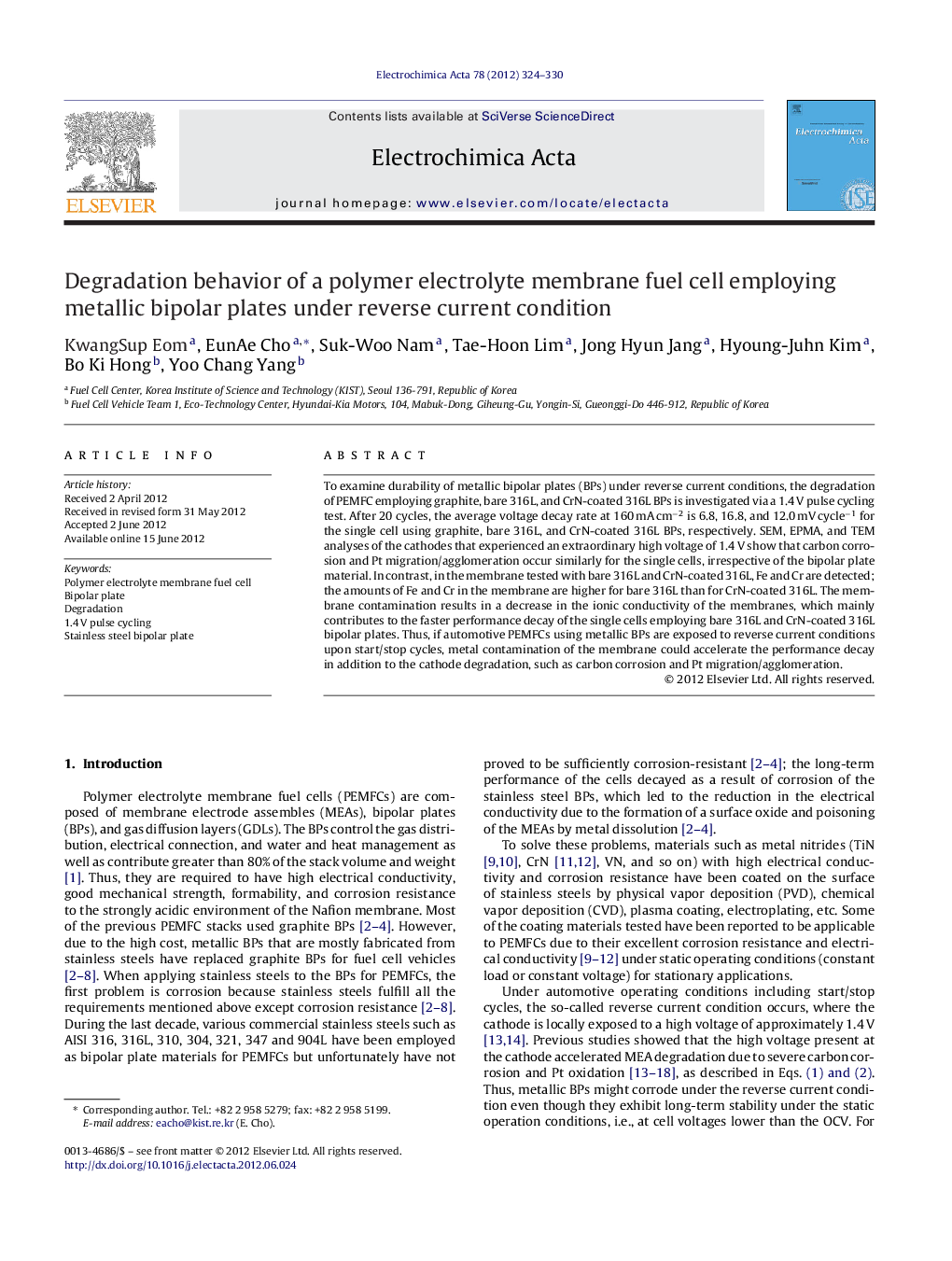| Article ID | Journal | Published Year | Pages | File Type |
|---|---|---|---|---|
| 188322 | Electrochimica Acta | 2012 | 7 Pages |
To examine durability of metallic bipolar plates (BPs) under reverse current conditions, the degradation of PEMFC employing graphite, bare 316L, and CrN-coated 316L BPs is investigated via a 1.4 V pulse cycling test. After 20 cycles, the average voltage decay rate at 160 mA cm−2 is 6.8, 16.8, and 12.0 mV cycle−1 for the single cell using graphite, bare 316L, and CrN-coated 316L BPs, respectively. SEM, EPMA, and TEM analyses of the cathodes that experienced an extraordinary high voltage of 1.4 V show that carbon corrosion and Pt migration/agglomeration occur similarly for the single cells, irrespective of the bipolar plate material. In contrast, in the membrane tested with bare 316L and CrN-coated 316L, Fe and Cr are detected; the amounts of Fe and Cr in the membrane are higher for bare 316L than for CrN-coated 316L. The membrane contamination results in a decrease in the ionic conductivity of the membranes, which mainly contributes to the faster performance decay of the single cells employing bare 316L and CrN-coated 316L bipolar plates. Thus, if automotive PEMFCs using metallic BPs are exposed to reverse current conditions upon start/stop cycles, metal contamination of the membrane could accelerate the performance decay in addition to the cathode degradation, such as carbon corrosion and Pt migration/agglomeration.
► The single cells are exposed to the reverse current condition; potentials of 1.4 V. ► The cell with metal BPs exhibits faster degradation than that with graphite BPs. ► After 1.4 V pulse cycling test, Fe and Cr are detected in the membrane. ► Metal contamination of MEA accelerates decay of cell performance.
